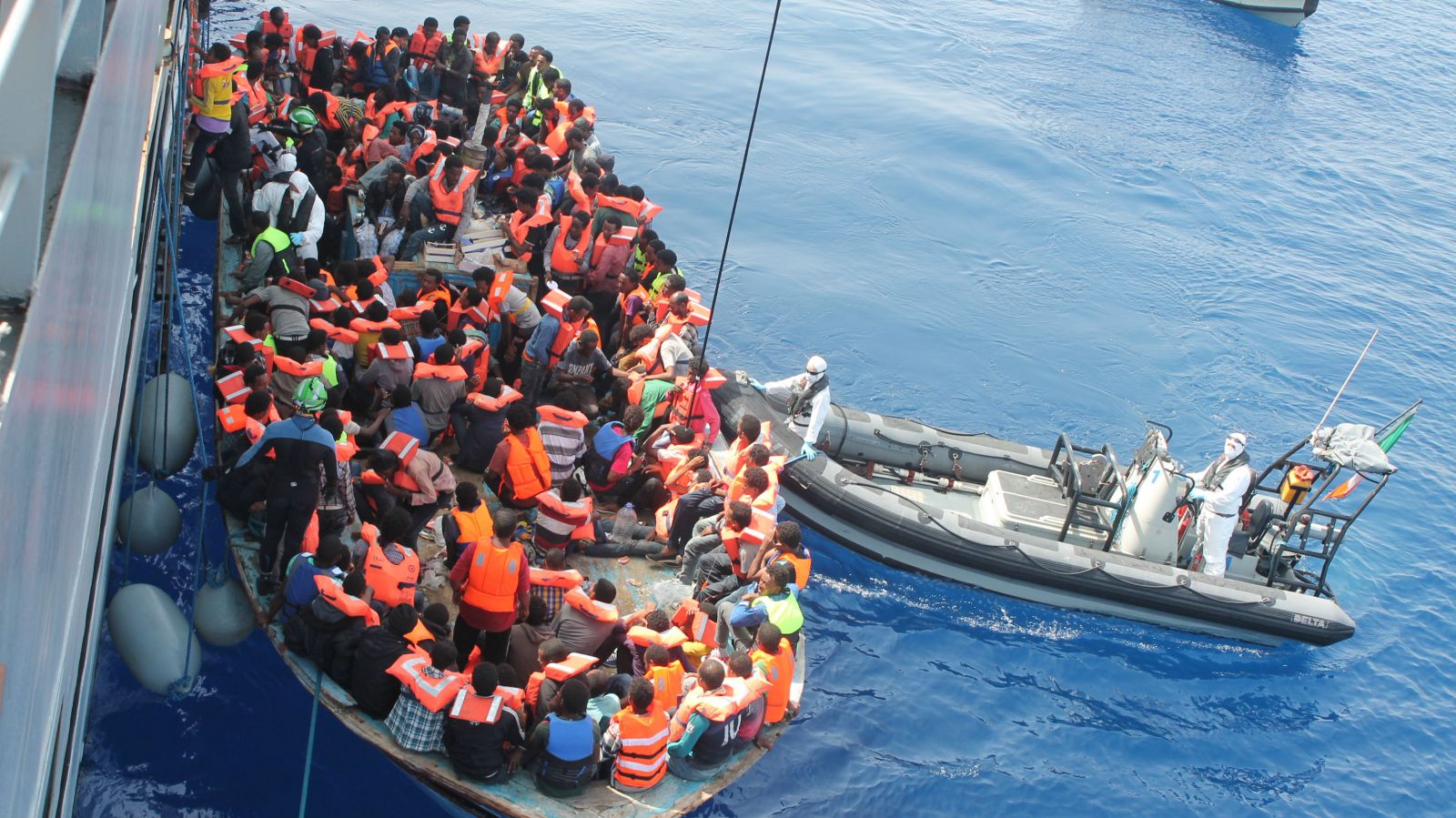Reckless Squandering or a Hidden Agenda?

By Captain John Dalby
The surprise announcement yesterday that the E.U. is deploying five warships to assist in the migrant situation in the Mediterranean has raised eyebrows amongst the maritime community.
The first issue is the cost. How much does it cost to maintain five fully manned naval vessels on a floating deployment for an unlimited time? $50 million a week? $500 million a week?
How appropriate is it for fully weaponized warships to undertake migrant watch and rescue? How many migrants can each vessel rescue? Are medical facilities adequate and appropriate (acknowledging that highly sophisticated, fully equipped surgical units are on board each vessel)?
How efficiently can the area be monitored by waterborne assets for immigrant craft – bearing in mind the limited range of even sophisticated radar and other sensors from just above sea level?
How quickly can a warship locate, identify and deploy to a suspected immigrant vessel? Including those not actually already foundering?
How can the naval assets monitor coastal (landside) movements prior to immigrants even embarking - without entering Libyan or other territorial waters (without a U.N. mandate as yet)?
Just one suitably equipped intelligence, surveillance, target acquisition aircraft such as available through Globalert can patrol, locate, identify even the smallest target; sweeping a sea level footprint of around 130,000 square miles at any one time. It can locate, identify, track and predict waterborne and land movements (up to 70+ miles inland) whilst remaining safely and legally in international airspace. It could co-ordinate waterborne deployments rapidly, effectively and with maximum humanitarian success via the Rome Maritime Co-ordination Centre; at a cost of around $70,000 a week.
Deploying such an airborne asset makes maximum operational sense, is considerably cheaper and more effective than the present and intended E.U. strategy – for what it is worth.
Furthermore, there are numerous more suitable (and unarmed) vessels capable of conducting professional search and rescue operations that can be chartered for, say, around $7,000/day, bringing the total immigrant rescue spend to less than $1 million a week. This is a far cry from the abovementioned $50 or $500 million a week in these days of alleged E.U. frugal austerity.
Unless, of course, there’s a hidden agenda that calls for a heavily-armed E.U. naval presence in the region, other than for the purposes of rescuing hundreds of unarmed immigrants?
Captain John Dalby is Founder and CEO of Marine Risk Management.
The opinions expressed herein are the author's and not necessarily those of The Maritime Executive.
